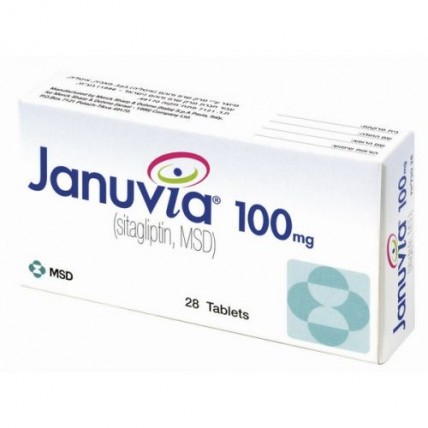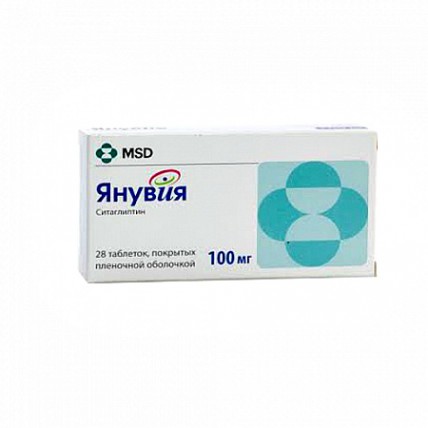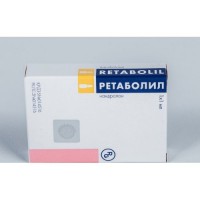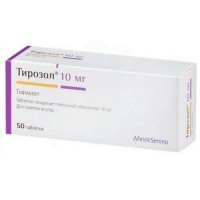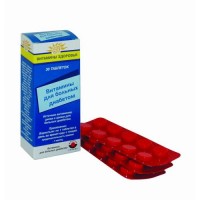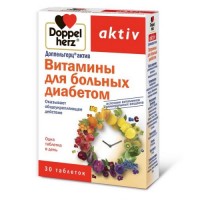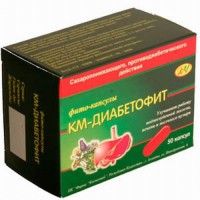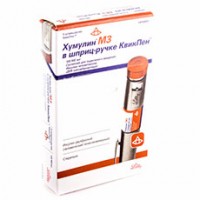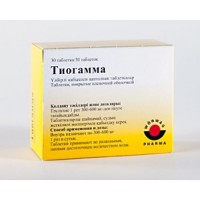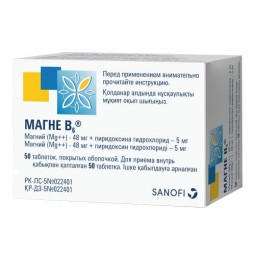JANUVIA® (Sitagliptin) 100 mg, 28 tablets
- $53.90
Out Of Stock
What Januvia is and what it is used for
Januvia contains the active substance sitagliptin which is a member of a class of medicines called
DPP-4 inhibitors (dipeptidyl peptidase-4 inhibitors) that lowers blood sugar levels in adult patients
with type 2 diabetes mellitus.
This medicine helps to increase the levels of insulin produced after a meal and decreases the amount
of sugar made by the body.
Your doctor has prescribed this medicine to help lower your blood sugar, which is too high because of
your type 2 diabetes. This medicine can be used alone or in combination with certain other medicines
(insulin, metformin, sulphonylureas, or glitazones) that lower blood sugar, which you may already be
taking for your diabetes together with a food and exercise plan.
Indications for use
Monotherapy
- addition to diet and exercise in patients with type 2 diabetes to improve glycemic control
Combination therapy with metformin
- initial therapy in patients with type 2 diabetes mellitus to improve glycemic control in combination with metformin, if monotherapy combined with diet and exercise does not provide adequate glycemic control
Combination therapy with sulfonylurea
- initial therapy in patients with type 2 diabetes mellitus to improve glycemic control in combination with sulfonylurea, if monotherapy combined with diet and exercise does not provide adequate glycemic control
Combination therapy with PPARγ agonist (thiazolidinediones)
- initial therapy in patients with type 2 diabetes mellitus to improve glycemic control in combination with a PPARγ agonist, if monotherapy combined with diet and exercise does not provide adequate glycemic control
Combination therapy with metformin and sulfonylurea
- in patients with type 2 diabetes mellitus to improve glycemic control in combination with metformin and sulfonylurea, if monotherapy combined with diet and exercise does not provide adequate glycemic control
Combination therapy with metformin and a PPARγ agonist
- in patients with type 2 diabetes mellitus to improve glycemic control in combination with metformin and a PPARγ agonist, if dual therapy combined with diet and exercise does not provide adequate glycemic control
Combination therapy with insulin
- addition to diet and exercise in patients with type 2 diabetes mellitus to improve glycemic control in combination with insulin (with or without metformin)
Method of administration and dosage
Januvia® can be taken with or without food.
The initial recommended dose is 25 mg under the supervision of a physician. The maintenance dose of Januvia® is 100 mg once daily as monotherapy or in combination with metformin, sulfonylurea, insulin (with or without metformin), a PPARγ agonist (thiazolidinediones), metformin and sulfonylurea or metformin and a PPARγ agonist.
When using Januvia® in combination with a sulfonylurea or insulin, a lower dose of a sulfonylurea or insulin may be considered to reduce the risk of hypoglycemia caused by a sulfonylurea or insulin.
Patients with renal impairment
Patients with mild renal impairment (creatinine clearance ≥50 ml / min, approximately corresponding to plasma creatinine levels ≤1.7 mg / dL in men, ≤1.5 mg / dL in women) dosage adjustment of Januvia® is not required.
For patients with moderate renal impairment (creatinine clearance ≥30 ml / min, but <50 ml / min, approximately corresponding
plasma creatinine level> 1.7 mg / dl, but ≤3 mg / dl in men,> 1.5 mg / dl, but ≤2.5 mg / dl in women) the dose of Januvia® is 50 mg once a day...
For patients with severe renal impairment (creatinine clearance <30 ml / min, approximately corresponding to plasma creatinine levels> 3 mg / dL in men,> 2.5 mg / dL in women), as well as end-stage renal disease, which requires hemodialysis or peritoneal dialysis, the dose of Januvia® is 25 mg once a day. Januvia ® can be used regardless of the dialysis time.
It is recommended to assess renal function before taking Januvia ® and periodically to carry out such an assessment thereafter.
Patients with hepatic impairment
No dosage adjustment of Januvia® is required in patients with mild to moderate hepatic impairment. The drug has not been studied in patients with severe hepatic impairment.
Side effects
In the analysis of four placebo-controlled clinical trials when using the drug as monotherapy or as part of a combination therapy with metformin or pioglitazone, the frequency of hypoglycemia and side effects from the gastrointestinal tract in patients receiving Yanuvia® was:
- hypoglycemia - 1.2%
- abdominal pain - 2.3%
- nausea - 1.4%
- vomiting - 0.8%
- diarrhea - 3.0%
In combination with metformin, adverse reactions that occurred in more than 1% of patients taking Januvia® with metformin and more often than those taking metformin alone were:
- diarrhea - 3.5%
- dyspepsia, flatulence - 1.3%
- vomiting - 1.1%
- headache - 1.3%
- hypoglycemia - 1.1%
In combination with sulfonylurea
- hypoglycemia - 9.5%
In combination with PPARγ agonists
- asymptomatic decrease in blood glucose levels - 1.1%
- symptomatic hypoglycemia - 0.4%
Combination with metformin and a PPAR agonist
- headache - 2.4%
- diarrhea -1.8%
- nausea, vomiting - 1.2%
- hypoglycemia - 1.2%
By the 54th week of treatment in the above combination:
-headache - 2.4%
- hypoglycemia - 2.4%
- upper respiratory tract infections - 1.8%
- nausea, vomiting - 1.2%
- cough - 1.2%
- fungal skin infection - 1.2%
- peripheral edema - 1.2%
Combination with insulin (with or without metformin)
- hypoglycemia - 9.6%
- flu - 1.2%
- headache - 1.2%
Postmarketing data
- anaphylaxis, angioedema, rash, urticaria, cutaneous vasculitis and exfoliative skin conditions, including Stevens-Johnson syndrome. - acute pancreatitis, including fatal and non-fatal hemorrhagic, or pancreatic necrosis
- impairment of renal function, including acute renal failure (sometimes with the need for dialysis)
- upper respiratory tract infection
-nasopharyngitis
constipation
- vomiting
- headache
- arthralgia, myalgia, pain in the limbs, back pain
Laboratory test results
- leukocytosis due to an increase in the number of neutrophils
Contraindications
- hypersensitivity to any of the components of the drug
- pregnancy and lactation
- type 1 diabetes mellitus (insulin dependent)
- diabetic ketoacidosis
- children and adolescents up to 18 years old (due to the lack of clinical
data)
Drug interactions
In studies on interaction with other drugs, sitagliptin did not have a clinically significant effect on the pharmacokinetics of the following drugs: metformin, rosiglitazone, glibenclamide, simvastatin, warfarin, oral contraceptives.
There was a slight increase in AUC by 11%, as well as an average Cmax by 18% of digoxin when used together with sitagliptin. This increase is not considered clinically significant, and therefore does not require correction of digoxin and Januvia® when used together.
There was an increase in AUC and Cmax of sitagliptin by 29% and 68%, respectively, in patients with the combined use of a single oral dose of 100 mg of Januvia® and a single oral dose of 600 mg of cyclosporine, a potent inhibitor of β-glycoprotein. The observed changes in the pharmacokinetic characteristics of sitagliptin are not considered clinically significant and do not require dose adjustment of Januvia® when used together with cyclosporine and other β-glycoprotein inhibitors (for example, ketoconazole).
The use of multiple doses of metformin twice a week in conjunction with Yanuvia® did not significantly affect the pharmacokinetics of sitagliptin in patients with type 2 diabetes mellitus.
Pharmacokinetic studies have been conducted in a population of patients with type 2 diabetes. Simultaneously, the drugs used did not have a significant clinical effect on the pharmacokinetics of sitagliptin. Drugs that are commonly used in patients with type 2 diabetes have been investigated, including cholesterol-lowering drugs (e.g. statins, fibrates, ezetimibe), antithrombotic drugs (e.g. clopidogrel), antihypertensive drugs (e.g. ACE inhibitors, angiotensin receptor blockers, beta -blockers, calcium channel blockers, hydrochlorothiazide), analgesics and non-steroidal anti-inflammatory drugs (for example, naproxen, diclofenac, celecoxib), antidepressants (for example, bupropion, fluoxetine, sertraline), antihistamines (for example, cetyrizine, prototypic, prototype) omeprazole, lansoprazole) and drugs prescribed for erectile dysfunction (for example, sildenafil).
Overdose
Small increases in QTc, which were not considered clinically important, were observed in one study at a dosage of 800 mg of Januvia®. Clinical studies with dosages exceeding 800 mg have not been conducted.
Treatment - removal of unabsorbed drug from the gastrointestinal tract, monitoring of vital signs, including ECG, symptomatic therapy.
Sitagliptin is poorly dialyzed, but prolonged dialysis can be prescribed in case of clinical need (13.5% is removed within 3-4 hours).
Release form and packaging
Film-coated tablets 100mg. On 14 tablets in a blister strip packaging from a film of polyvinyl chloride and aluminum foil. 2 contour packages, together with instructions for medical use in the state and Russian languages, are placed in a cardboard box.
Storage conditions
Store at a temperature not exceeding 30 ° C.
Keep out of the reach of children!
Shelf life 3 years
Do not use after the expiration date printed on the package.
